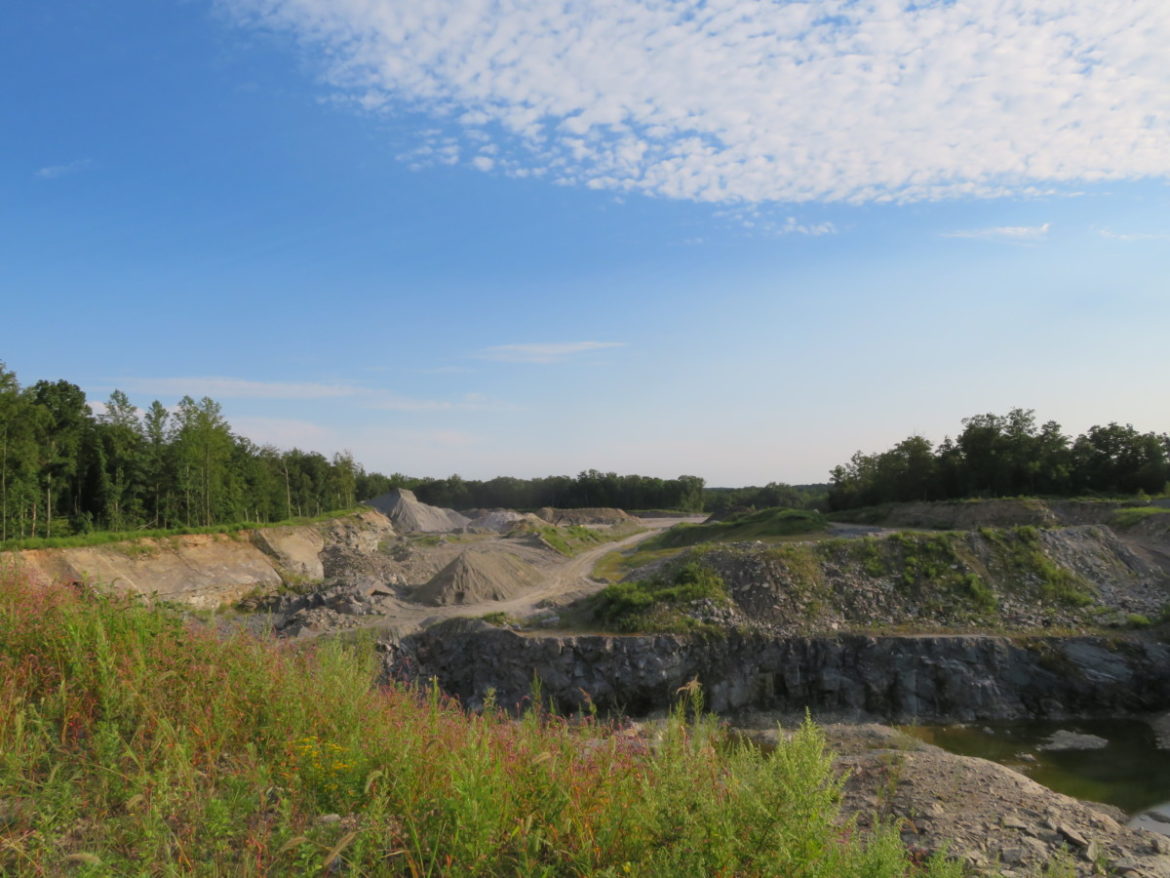MONROE, CT — A hearing on an ambitious plan to restore wetlands in the Pepper Street Business Park, bring in 980,000 cubic yards of fill and build an office building will continue before the Inland Wetlands Commission tonight.
According to the plan, trucks would bring in the fill over a 10 year period to prepare the site for development. The materials would fill a big hole left from an illegal graveling operation started by the previous owner. Astro Land Holdings LLC and Spacely Land Holdings LLC, acquired the properties at 64 Cambridge and 4 Independence drives, which total over 72 acres, last year.
The application also includes the construction of a small office building in the early phases.
A special meeting will be held tonight, Wednesday, at 6 p.m. To attend, click on this link to access it on GoToMeeting. Members of the public may also dial in, by calling 1 (224) 501-3412. The access code is 548-840-877.
The commission has yet to hear a presentation from experts for the intervenor on the application, Peter Metropoulos as trustee to The Thomas C. and Stella Maganas 1988 Family Trust, the owner of 36 Timothy Hill Road. He is represented by Attorney Joel Z. Green.
During a portion of the hearing held last week, George T. Logan, a soil scientist for the intervenor, said the plan seems like “a novel idea” and asked the applicants if they know of similar projects to restore wetlands on this scale that were, or were not, successful.
Kevin Solli, of Solli Engineering, the engineer for the project, said he has never been involved in a project that’s similar in scope, scale or size to this one, and has not heard or read about any similar projects in New England.
Bill Kenny, a soil scientist and landscape architect from Fairfield who represents the applicant, also said he has not seen examples of similar projects. However, he said there are many times where new wetlands are created successfully.
“… I think it’s much easier than creating a new wetland,” Kenny said of the plan, “and new wetlands are being successfully created every day throughout the country.”
Solli said they calculated the average annual rainfall from 2000 to 2019, during the peak vernal pool months of November to the end of April, and the natural flow rate was an average of 2,700 gallons a day. In current conditions it is only about 600 gallons a day, he added.
“We can regulate the rehydration from this well to match that deficit,” he said of using a bedrock well on the site. “That’s something we can design as an irrigation system to better replicate what was there previously.”
Russell Dirienzo, a consultant hired by the commission, said using water from the bedrock well, rather than a detention basin, is a better idea. However, he has said on several occasions that he does not believe it is possible to mimic nature.
Dirienzo is a licensed environmental professional, who is the principal geologist and associate vice president of Arcadis, a Sandy Hook firm.
Solli said their plan has improved sediment controls and proposes additional plantings to the north of Vernal Pool 3, and wetlands trees and plantings to restore an area near Timothy Hill Road. A natural clay material would be used for a liner on the site.
If the application is approved, Solli said they would be happy to provide, as a condition, weekly soil erosion and sediment control inspection reports, monthly turbidity monitoring reports, quarterly visual inspection reports, semi-annual stormwater discharge chemical analysis reports, and annual vernal pool assessments.
Logan agreed with Dirienzo that there are some positive things in the plan, such as using the bedrock well, but added, “I don’t think this restoration plan is ready for prime time. I don’t think it was fully thought through.”
Vice Chairwoman Lois Spence said there is no alternative plan, should the clay liner be breached, or if the restoration of the watershed is not successful. She also wanted to see more details and benchmarks in the plan.
“Our plan is extensive and the detail is in there,” Solli said.
“I guess I’m one who likes the step-by-step directions,” Spence said. “I just want to make sure we have all the details we need, so our staff can come through.”
Among the details, Solli said there are 13 different sheets dedicated to the soil erosion, sediment control phasing, along with written requirements.
“I believe it’s baked into the cake and I think it’s a cross between our reports and our narratives that we’ve submitted, and the plans themselves,” Solli said of the details. “I do believe it’s there.”
Solli said the liner would be installed around year nine, adding the wetlands will not only rely on the liner.
A donation offer
Spence asked if there is any alternate plan, if it is not working within a year or two. “What kind of alternate plan have you got?” she asked. “What do we do if it doesn’t work?”
“We’ve tried to put our best foot forward,” Solli said. “I don’t see other alternatives to address the problems on this property, caused by a previous owner. This is to address previous wetlands impacts.”
Derienzo asked Solli if he is so certain this is going to work that he’s willing to accept a condition of an approval requiring them to study the site over the next few years and propose an alternative plan if it is not working, or if it’s a case where he would say, “we did our best and that’s it.”
Solli said they would be happy to accept the condition.
If the wetlands restoration plan does not work, Arnold Karp, managing partner of the two LLCs that own the properties, said he is willing to make a $10,000 donation to a town land use commission or an environmental organization to be used for a remediation project.
The applicants have also agreed to to offer a 20-acre conservation easement.






